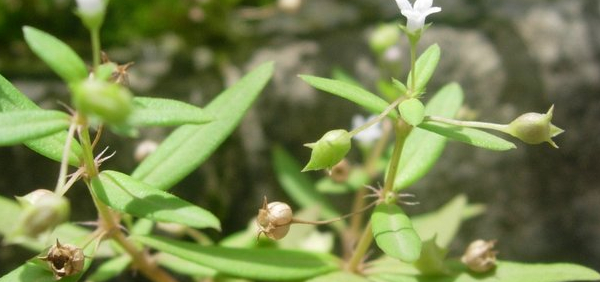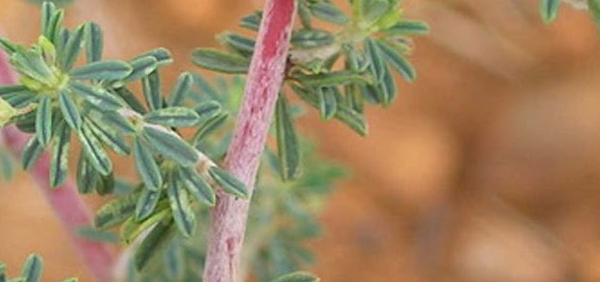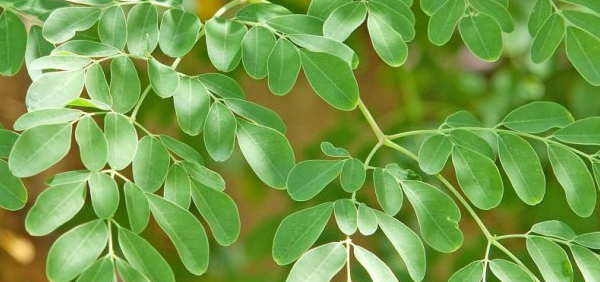kasani :
 Kasani (Chicory), commonly known as Kasni, is the all-time preferred herb by the Ayurvedic physicians for its medicinal benefits. Kasni grows throughout India, especially in the northwestern and southern parts of the country. This plant has its origin in Europe and now has spread all over the world.
Kasani (Chicory), commonly known as Kasni, is the all-time preferred herb by the Ayurvedic physicians for its medicinal benefits. Kasni grows throughout India, especially in the northwestern and southern parts of the country. This plant has its origin in Europe and now has spread all over the world.HISTORICAL AND MYTHOLOGICAL REVIEW:
Taxonomical Classification
Kingdom: Plantae - Plants
Subkingdom: Tracheobionta - Vascular plants
Division: Magnoliophyta - Flowering plants
Class: Magnoliopsida - Dicotyledons
Order: Asteraless
Family: Asteraceae
Genus: Cichorium
Species: Cichorium intybus
VERNACULAR NAMES
Sanskrit: Kasni, Hinduba, KasniEnglish: endive, chicory
Hindi: Kashi, Kaasni, Kssni, Hinduba
Urdu: Kasani
Telugu: Cicori, Kasini, Vittulu
Bengali: Kashi, Kaasni, Kssni, Hinduba
Marathi: -चीकोरी Cīkōrī
Gujarathi: Kashi, Kaasni, Kssni, Hinduba
Tamil: Kasinivirai, Kashni
Malayalam: Cikkari
Kannada: - ಚಿಕೋರಿ Cikōri
Punjabi: Gul, hand, kasni, suchal
Sindhi: -چيڪ
Arabic: Hinduba
Spanish: -achicoria, escarola
Japanese: -チコリ, 植物の種
Chinese: Ku-T’ Sail
French: -endive; chicorée
German: Zichorie
Nepal: -कासनी
Persian: Cichorii
Sinhalese: -චිකරි cikari
Greek: Kichora, Kikori
Varities:
There are two varieties of the plant, a cultivated sweet variety, and the wild bitter variety.Definition
Common chicory is also known as blue daisy, blue dandelion, blue sailors, blue weed, bunk, coffeeweed, cornflower, hendibeh, horseweed, ragged sailors, succory, wild bachelors buttons, and wild endive. (Note: "Cornflower" is commonly applied to Centaurea cyanus.) Common names for varieties of var. foliosum include endive, radicchio, radichetta, Belgian endive, French endive, red endive, sugarloaf, and witloof (or witlof).Synonyms
Synonyms in Ayurveda: kasani-Cichorium intybus, Chicory, Succory, Blue sailor, Radicchio, Hinduba, Kasni, Chikory, Cikkari, Chikkari, Kachani, Kashini, Kasini, Kacini, Kasini-virai, Kasini-vittulu, Kaasni
Rasa: Tikta
Guna: Laghu Ruksha
Veerya: Sheetha
Vipaka: Katu
Karma: Kaphapittasamaka
Kasani or Chicory is a well known coffee substitute and has various nutritive properties. The phytochemicals are present throughout the plant but the main constituents are present in the root. Chicoric acid is the major chemical constituent of Kasani. Kasani has anti-inflammatory, anticancer, antimicrobial and antioxidant properties. It helps to manage liver diseases, constipation, flatulence and slow digestion
Cultivation:
Chicory is a native of Eurasia that was taken later to America by the Europeans. Today it is found growing naturally there. In India chicory grows mostly in the northwest and southern parts. It is cultivated for its leaves, roots and seeds. Chicory grows well in well-drained soil where too much water cannot accumulate like sandy and chalky soil.Propogation:
Seed - sow in situ. Seedlings can be transplanted. Successional sowings can be made.Harvesting:
Roots can be harvested from fall through early spring. Although you can harvest chicory leaves at any time during the growing season, they are less bitter in early springtime. Summertime is ideal for blanching chicory or collecting seeds.Phytochemistry:
Chicory herb contains inulin in the root, coumarins (chicoriin, esculetin, esculin, umbelliferone and scopoletin), sesquiterpene, lactones (including lactucin and lactucopicrin), and series of glucofructosans. Leaves of the plant contains sulphates and phosphates of sodium, magnesium and potassium as well as potassium nitrate. It also contains a bitter glycoside named cichorine.
Raw Chicory root contains only citric and tartaric acids whereas the roasted contains acetic, lactic, pyruvic, pyromucic, palmitic and tartaric acids.
Analysis of the seeds shows oil 4.7%, Fatty acid composition, Saturated 21.7%, Unsaturated 78.3%.
PHARMACOLOGY:
important formulationsParts used for medicinal purpose
Leaves, Root, Seed, ,Dosage:
- Leaf juice extract - 12-24 ml
- Root powder - 3-6 gram
- Powder of seeds - 3-6 gram
Substitute:
Chicory is used as a substitute of coffee. Though it does not contain caffeine, it gives similar effects as the original beverageAdultrants:
In Napoleonic Era France, chicory frequently appeared as an adulterant in coffee,Controversy:
-Interestingly, it is partially within the argument for whether or not chicory root helps digestive health where the controversy lies, and other health experts believe that it might actually cause more harm than good to the gut. It’s important to understand that chicory root is a processed, isolated fiber unlike whole food sources such as ground flax seed, for example.The shorter chains of inulin are called Fructooligosaccharides, or FOS for short. FOS naturally occurs in a variety of plants like onion, leeks, garlic, asparagus, Jerusalem artichoke, and chicory root. While many of the health benefits mentioned above such as better gut health and more balanced blood sugar (in comparison to other types of non-caloric, artificial sweeteners), there is also the potential that FOS can cause some digestive distress.
One study found that FOS increased symptoms of cramping, diarrhea, bloating and loose stools, particularly in subjects that had an intolerance to fructose. Furthermore, those with SIBO (small intestinal bacterial overgrowth) and IBS (irritable bowel syndrome) could react poorly to FOS ingestion.
While less common, other studies have shown that chicory might cause an allergic reaction in some people, especially anyone with an allergy to birch pollen or ragweed. Symptoms can include an itchy, tingling mouth, pain and swelling. Lastly, pregnant women are advised to avoid chicory root as it has potentially been linked with miscarriage, and more research is needed as to its safety during breastfeeding.
On the flip side, inulin-containing foods like chicory root have also been very promising in their potential to support health, particularly looking at a balanced gut microbiome, decreased cholesterol levels and promotion of regular bowel movements in those who deal with constipation.
Commercial value:
The roots have the potential to be used for the production of biomass for industrial use. They are rich in the starch inulin which can easily be converted to alcohol. A blue dye has been obtained from its leaves. The flowers are an alternative ingredient of QR herbal compost activator. This is a dried and powdered mixture of several herbs that can be added to a compost heap in order to speed up bacterial activity and thus shorten the time needed to make the compost.Morphology:
It is a bushy perennial plant that attains a height of 1 to 3 feet. The stem has edges having hard branches. Leaves are sphere shaped having a bitter taste. Flowers are of blue of lavender color having a diameter of 1 to 1 ½ inch, which is bit thicker at the center. Fruit is angular, having light color. Root is like a tail of a cow and is fleshy having brownish color from outside and white color from inside. It has a length of 2 ½ feet and has a bitter taste. The other related species that is cultivates is Cichorium endivia. It is generally found in cultivated lands and gardens.Histology:
-Leaf anatomy - The lamina has an adaxial and abaxial epidermis, each one - cell thick , separated by mesophyll cells. The lamina is wider where there are vascular bundles which contain xylem tracheary elements and phloem. The walls of the epidermal cells above and below the vascular bundles are thicker than in the rest of the lamina. In the midrib, there is a distinct hypodermis beneath both abaxial and adaxial epidermis. the midribs contain several vascular bundles which are larger and better defined than in the lamina. Large parenchyma cells occupy most of the region between the two hypodermal layers.Geographical distribution:
In India plant is found in the northwestern regions like Kashmir and Punjab and in area of south India. In western countries is now a days cultivated with the name endive. It is cultivated in completely black outed area to make leaf soft and pale in appearance. This plant has it origin in Europe and now has spread all over world.ECOLOGICAL ASPECT:
-Cichorium species originated in Mediterranean Europe, but has been popularized in Africa, North America, and Australia. Though it is called a weed in North America, it is named an endive (small, bitter-leafed vegetable) in Europe. It is found near roadways most often. Cichorium can tolerate most soils, but grows exceptionally well in soils rich with lime. Cichorium intybus is able to grow in fertile soil or sandy loam, but grows optimally in a moist meadow soil with bountiful amounts of lime. Cichorium requires a lot of sunlight and must be kept in a sunny window or gardenPlant conservation:
Shelf life of Kasani powder is approximately 6 months. Store it in a airtight container at room temperature.General Use:
- It Pacifies Pitta and Kapha doshas
- Gives relief in pain, burning sensation and swelling in digestion.
- Has Sedative action
- Deepana दीपन (promote appetite but do not aid in digesting undigested food)
- Good for heart and heart disorder
- Diuretic
Therapeutic Uses:
- Abortifacient - causes abortion.
- Antimicrobial - active against disease causing microbes.
- Anthelmintic - expel parasitic worms (helminthes) and other internal parasites from the body which cause various infection.
- Analgesic - it relieves pain and act as analgesic
- Antiulcer - help in healing ulcers.
- Antimalarial - effective against malaria.
- Ant diabetic - control blood sugar levels in body.
- Cholagogue - promotes the discharge of bile from the liver, purging it in downward direction
- Anti-inflammatory action - it reduces inflammation in body.
- Hepatoprotective - it prevent damage to the liver and improve its function
- Diuretic property - promoting urine excretion and act as agent that increases the amount of urine excreted. Thus can be used in kidney function.
- Demulcent - relieving inflammation or irritation of skin
- Emmenagogue - it stimulate blood flow in the pelvic area and uterus in women.
- Gastro protective - protects gastric mucosa and prevent gastritis.
- Hypoglycemic - helps in blood-sugar lowering.
- Hypocholesterolemic - Lowers the cholesterol level and maintains healthy heart.
- Hypolipidemic - lipid-lowering
- Laxative action - tending to stimulate or facilitate evacuation of the bowels. Hence effective in constipation.
- Sedative - promoting calm or inducing sleep. Has a sedative action on body
- Tonic - Restore or improve health or well-being.
Systemic Use:
Administration:
1. Kasani Juicea. Take 2-3 teaspoon of Kasani juice.
b. Add the same quantity of water and take it on an empty stomach once a day.
2. Kasani Churna
a. Take ¼ - ½ teaspoon of Kasani churna.
b. Add honey or water and take it twice a day after taking lunch and dinner.
3. Kasani Capsule
a. Take1-2 capsule of Kasani.
b. Swallow it with water twice a day after taking lunch and dinner.
4. Kasani Ark
a. Take 6-10 teaspoon of Kasani Ark (Chicory Distillate).
b. Add the same quantity of water to it and take it before lunch and dinner twice a day.
Pharmacological:
It is kapha and pitta suppressant. It is relaxant and induces sleep. It acts as pain reliever and anti inflammatory agent. It works as appetizer, liver stimulant and increases digestive powers. It acts as blood purifier and provides strength to heart. It is a diuretic. Its roots reduce menstrual disturbances. It has good effect in lowering down the burning sensations in the body. It also helps in lowering the blood pressure. It decreases the raised body temperature in fevers.Clinical trials:
1. A Study of Chicory for Treatment of Osteoarthritis of the Hip or Knee University of Texas, Southwestern Medical Center at DallasResearch:
- Street RA, Sidana J, Prinsloo G.Cichorium intybus: Traditional uses, phytochemistry, pharmacology, and toxicology.Evidence-Based Complementary and Alternative Medicine.2013.
- Nwafor IC, Shale K, Achilonu MC.Chemical composition and nutritive benefits of Chicory (Cichorium intybus) as an ideal complementary and/or alternative livestock feed supplement.The Scientific World Journal.2017.
Precautions:
Pregnant women should avoid consuming chicory as it could up the risk of having a miscarriage by stimulating menstruation.People suffering from gallstones should not consume this plant in excess as it would aggravate the situation.Toxicity studies:
Chicory though has a truck load of benefits, like everything else it has drawbacks too. If you are allergic to marigolds, ragweed and daisies you might also be allergic to chicory as they are closely related.Use in other system of medicine:
CONCLUSION:
KEY WORDS: kasani Cichorium intybus Linn.
- » Classification and names of kasani
- » Synonyms and definitions of kasani
- » Drug Properties of kasani
- » Chemical Constituents of kasani
- » Standardization of kasani
- » Parts used and Dosage of kasani
- » Morphology and Histology of kasani
- » Distribution and Conservation of kasani
- » Cultivation of kasani
- » kasani in the market
- » Medicinal Uses of kasani
- » Researches and clinical trails of kasani
- » kasani in other sytems of medicine
- » Ayurvedic formulations with kasani
- » Images of kasani













